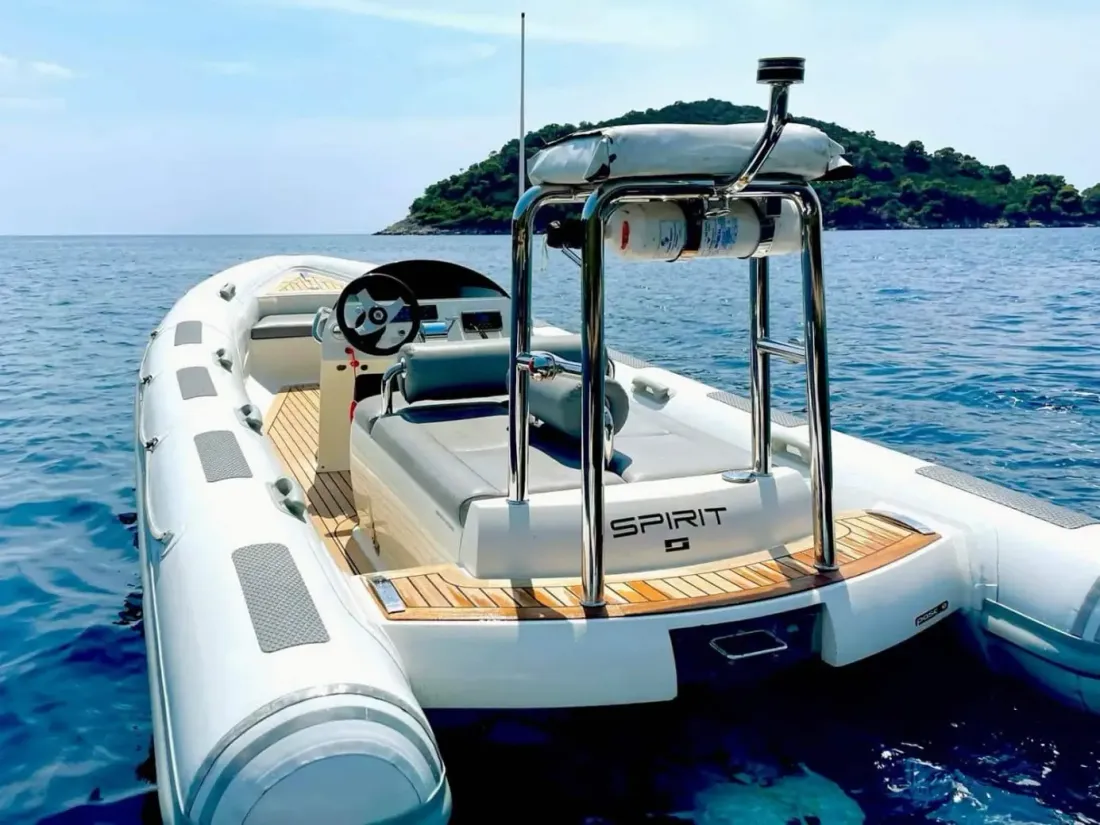When choosing the perfect yacht tender, understanding the variety of options available is crucial. Today’s tenders are designed to meet a range of needs, from practical transportation to luxury and adventure. Below, we explore the most popular tender types to help you decide which one suits your lifestyle and yachting goals.

Yacht Tender Types
1. Limousine Tender
Limousine tenders are the epitome of luxury and sophistication, offering climate-controlled cabins and stylish designs. These tenders are perfect for high-end yachts, providing comfort and privacy for guest transfers, even in challenging weather conditions.
2. Open Tender
Open tenders are versatile and designed for day trips, watersports, and standalone use. They come in a variety of designs, some featuring optional cabins for added comfort. While they excel in performance, they offer limited weather protection compared to enclosed options.
3. RIB (Rigid Inflatable Boat)
RIBs are known for their stability, safety, and lightweight construction. They are highly versatile, making them ideal for watersports, passenger transfers, and general-purpose use. Though practical, their basic design lacks the luxury of other options.
4. Beachlander
Beachlanders are built for adventure, allowing seamless access to remote beaches and shallow waters. Their innovative bow design makes them ideal for transporting gear and exploring less accessible areas. However, they are less luxurious and provide limited weather protection.
Key Considerations for Choosing a Yacht Tender

Selecting the right yacht tender is a crucial decision for yacht owners, as it directly impacts functionality, versatility, and overall enjoyment. Here are some essential factors to consider:
1. Purpose of the Tender
The intended use of the tender is the first and most important consideration. Whether you need it for guest transfers, watersports, exploring remote beaches, or emergency situations, understanding the primary function will help you choose the best type. For example:
- Limousine tenders excel in comfort and luxury.
- RIBs are ideal for versatility and stability.
- Beachlanders are perfect for adventure and exploring shallow waters.
2. Size and Capacity
Consider the tender’s size relative to your yacht. It should fit seamlessly into your garage or deck space while accommodating the number of passengers you expect to carry. Larger tenders offer more comfort and amenities, but they require ample storage space and may need davits or cranes for deployment.
3. Propulsion Options
The choice of propulsion—outboard engines, inboard motors, jet drives, or pod drives—depends on your performance needs and the type of tender.
- Outboard engines are cost-effective and easy to maintain.
- Jet propulsion provides shallow-water access and enhanced safety for watersports.
- Pod drives offer smoother handling and reduced vibration for luxury tenders.
4. Weather Protection
Depending on your cruising destinations, weather protection can be a critical factor. Tenders like limousine tenders come with fully enclosed cabins for all-weather comfort, while open tenders and RIBs may require additional coverings or modifications for adverse conditions.
5. Storage and Accessories
Assess the tender's storage capacity for items like watersports gear, luggage, or safety equipment. Additionally, consider if features such as sunshades, boarding ladders, or swim platforms are important for your needs.
6. Budget and Maintenance
Tenders range widely in price, from basic RIBs to high-end limousine tenders. Simpler designs are often more economical, while luxury tenders may demand more upkeep.
Beyond Transportation: How Tenders Enhance Your Yachting Lifestyle

Yacht tenders are often seen as simple transportation tools, but they play a far more dynamic role in elevating your overall yachting experience. From adding luxury and adventure to enhancing functionality, tenders are indispensable companions for yacht owners and guests. Here’s how tenders go beyond mere transport to enhance your yachting lifestyle:
- Expand Exploration: Reach remote beaches, hidden coves, and shallow waters that your main yacht can’t access.
- Support Watersports: Tenders like RIBs are perfect for activities such as wakeboarding, snorkeling, or diving.
- Enhance Guest Comfort: Limousine tenders provide luxury and privacy with climate-controlled cabins, making guest transfers a stylish experience.
- Serve Practical Purposes: Use tenders for daily tasks like transporting supplies, waste removal, and provisioning.
- Ensure Safety: Tenders can be used for emergency evacuations or as backup vessels, providing peace of mind during trips.
Tenders are more than just a way to get to and from shore—they bring versatility, luxury, and practicality to your yachting experience


Member discussion